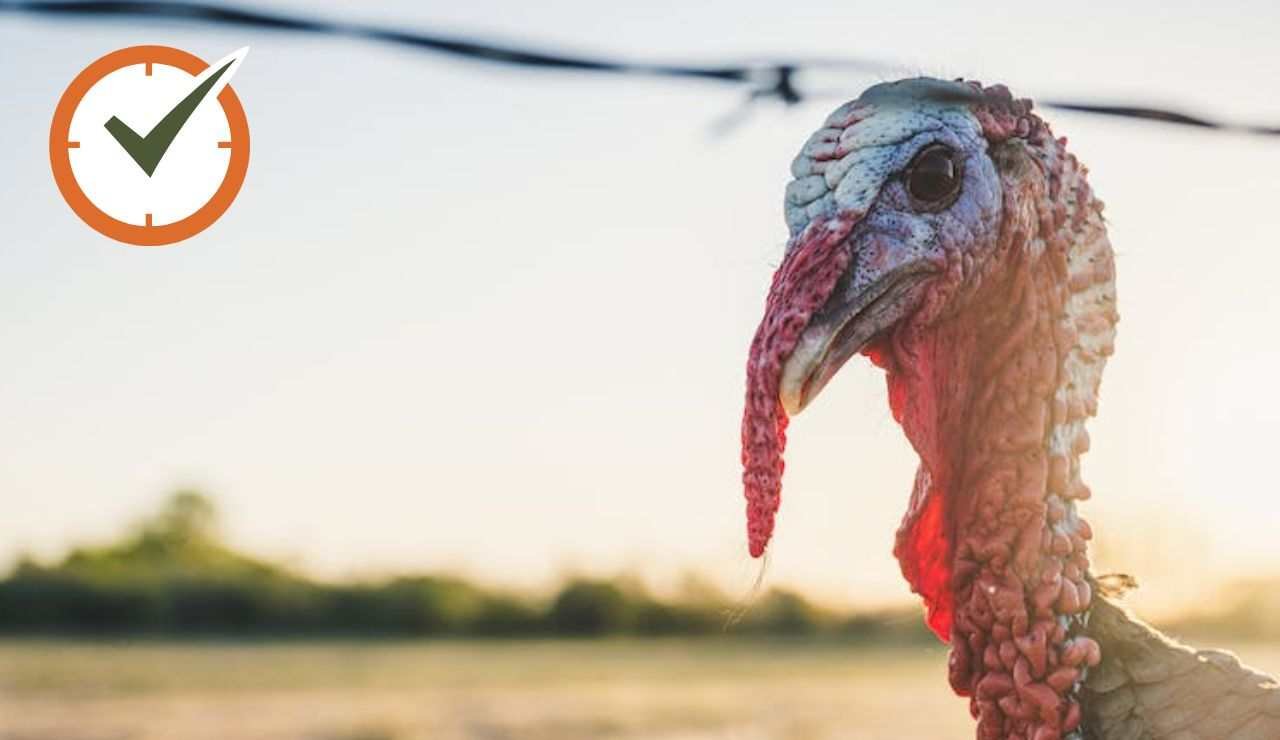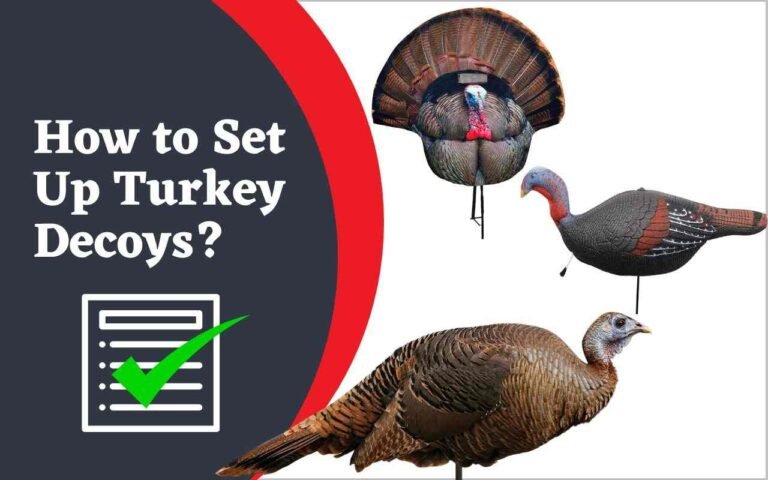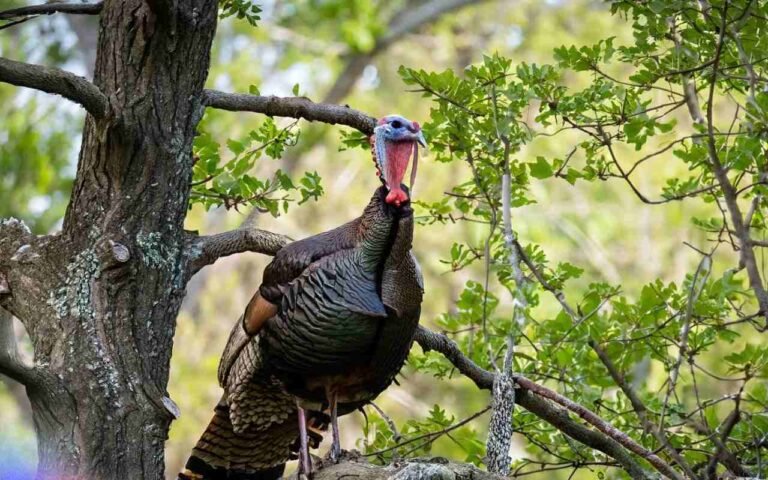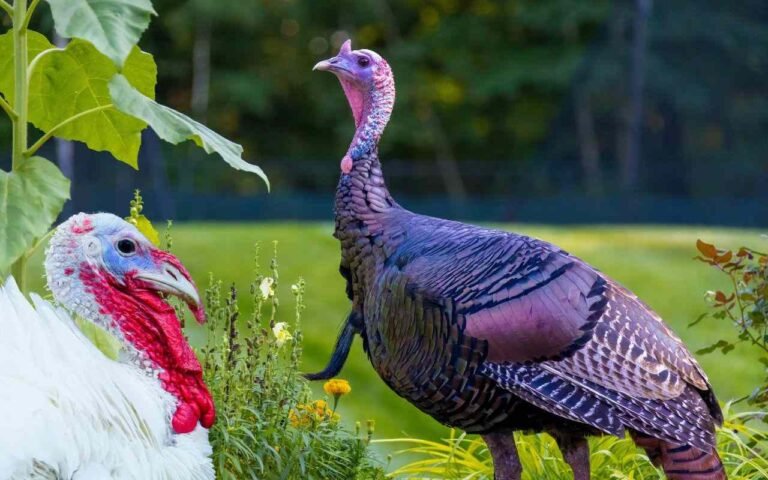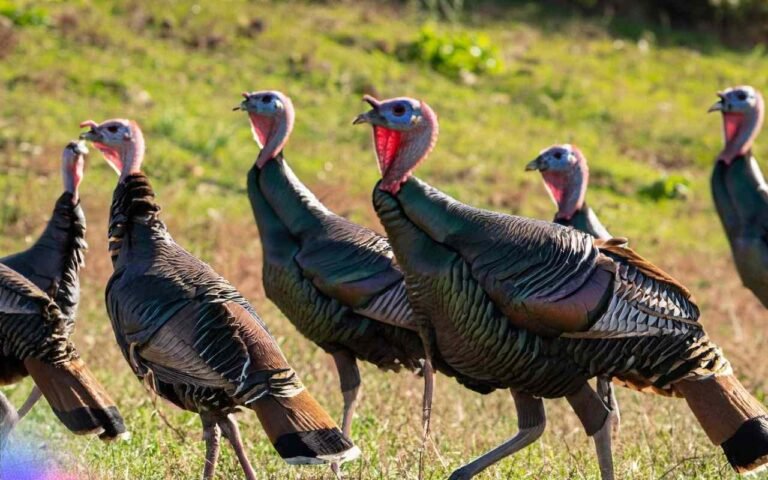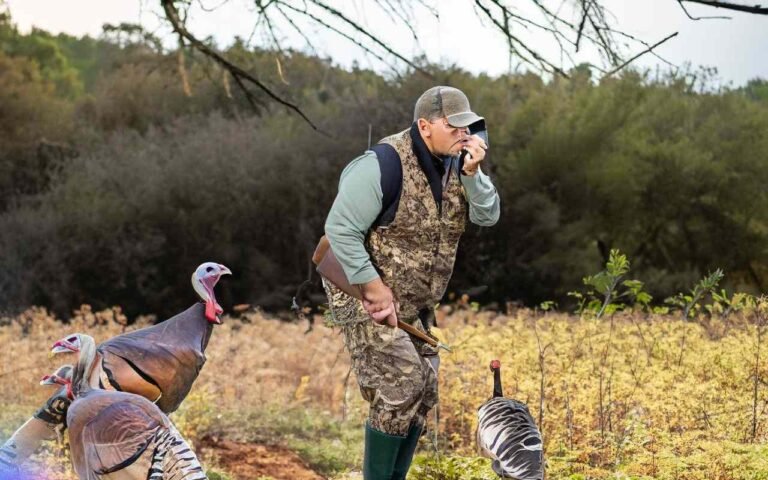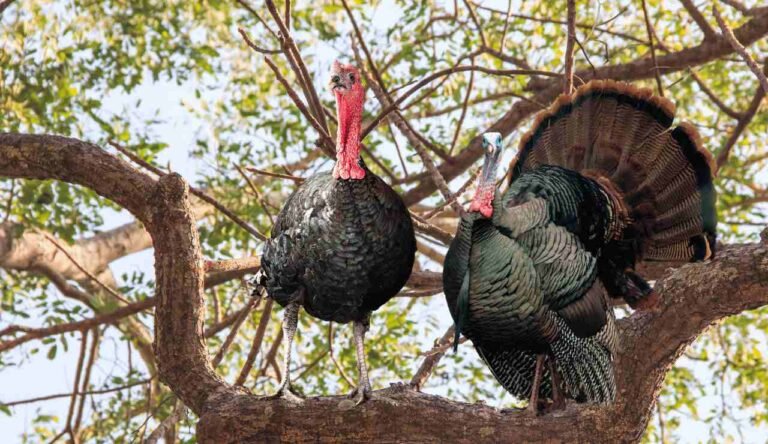What is The Best Time to Hunt Turkey? The Perfect Moment to Bag Your Gobbler!
Turkey hunting is a well-liked hobby that requires knowledge of many aspects that affect bird activity and behavior. The date of the hunting season is a crucial factor to consider as it may have a major influence on both the reproductive chronology of turkeys and hunter satisfaction. Let’s examine the importance of time in turkey hunting and the variables that influence the behavior and activity of turkeys.
What is the best time to hunt turkey?
Typically, in the spring, when they are in the height of their breeding season, it is the greatest time to hunt turkeys. Male gobblers are easier to find and call in at this time of year since they are more loud and active. Some hunters prefer hunting in the middle of the day because toms are more receptive to calls, and the hens are likelier to abandon the toms and return to their nests.
Additionally, hunters choose those times since turkey gobbling is loud during the first two hours of daybreak. It’s crucial to remember that the ideal time to hunt turkeys might change based on various variables, including the state in question and the local bird population. The best time to go turkey hunting is whenever it’s legal to do so in your area.
| Factors | Best Time to Hunt Turkey |
|---|---|
| Months | Spring (April to May) |
| Time of Day | Morning, just before sunrise |
| Late afternoon and evening, when turkeys are roosting | |
| Weather | Avoid cold or rainy weather |
| Terrain | Look for open areas with ample food and water |
| Breeding Season | Spring, during the peak breeding season for male turkeys |
| Local Factors | turkeys are more likely to be found in open areas with plenty of food and water |
Understanding the Importance of Timing When Hunting Turkeys
- Hunters may target gobbling males and have a better chance of success if the hunting season is started at the right time.
- Timing should minimize detrimental effects on turkey populations by balancing hunting opportunities with effective population management.
- The hunting experience is improved, and hunter satisfaction is increased by starting the season when gobbling activity is at its highest.
Factors Affecting Turkey Behavior and Activity
- Random Hunting activities may change how turkeys travel and limit gobbling activity.
- Weather and food availability are environmental factors that affect turkey behavior.
- Suitable environmental characteristics influence the presence of turkeys during hunting.
- Effective calling tactics draw turkeys into the hunter’s field of vision.
Advantages and Disadvantages of Spring Turkey Hunting:
| Advantages | Disadvantages |
|---|---|
| Gobbling Activity: Peak gobbling during mating season | Increased Hunting Pressure: More competition from hunters |
| Easier Spotting: Less foliage allows easier turkey spotting | Variable Weather Conditions: Unpredictable weather can impact hunting |
| Longer Hunting Days: More daylight hours for pursuing turkeys |
Turkey’s Behavior during Spring
| Turkey behavior during spring | Description |
|---|---|
| Mating Rituals | Turkeys perform mating rituals in the spring because various flocks make it easier for them to determine dominance. |
| Spring Routine | Walking, conversing, eating, grooming, fighting for dominance, mating, watering, and loafing are all part of the turkey's daily routine. |
| Roosting Behavior | At sunset, turkeys fly up onto lower tree branches and eventually climb higher to their roosting locations. They sometimes roost alone but often roost in groups. |
| Seasonal Changes | Large winter flocks break up in April. From late February to early May, breeding peaks in April and May. |
Optimal Hunting Strategies for Spring Season
| Hunting Strategies | Description |
|---|---|
| Locate Turkeys | Locate habitats that provide food, protection, and places to sleep close to water. |
| Pre-season Scouting | Scouting should be done before the season to comprehend the movements of the turkeys and spot any changes in their behavior. |
| Analyze Seasonal Changes | Observe how huge winter flocks break up and how breeding activity increases in April and early May. |
| Hunt During the Day | Plan your hunting expeditions during the daytime when turkeys are most active. |
| Scout the Area | Learn about the hunting area to locate vantage points and possible hotspots for turkeys. |
| Use Locator Calls | Find where turkeys are roosting by using owl or crow locator sounds. |
| Carry More Calls | Bring a range of turkey calls, such as slate, diaphragm, or box calls, to accommodate various hunting situations. |
| Be Early | To set up your view point and take advantage of the early morning bird activity, go to the hunting spot well before daybreak. |
| Consider Gear | Although expensive equipment is not required, make sure you have the proper camouflage apparel, a rifle, and turkey calls. |
Seasonal Comparison: Spring vs. Fall Turkey Hunting
| Aspect | Spring Turkey Hunting | Fall Turkey Hunting |
|---|---|---|
| Roosting Behavior | Spring turkeys usually roost within a few acres in the same general location. | Fall turkeys significantly extend their territory, sometimes covering more than 400 acres. |
| Hunting Purpose | Male turkeys aggressively seek out female turkeys throughout the spring season, which is focused on mating objectives. | Due to stable turkey numbers, fall hunting has been reinstated in several states where it had previously dropped. |
| Hunting Techniques | Using a variety of turkey sounds, spring hunters call in and attract toms. | Fall hunting may entail unconventional methods or techniques like running turkey hounds. |
| Popularity | For many hunters, the best time to go turkey hunting is in the spring. | Compared to spring, fall turkey hunting gets less attention. |
| Economic Value | Trips for turkey hunting in the spring often provide more financial rewards than those in the autumn. | The economic benefit and participation rates of fall turkey hunting are lower. |
Time of Day Considerations
| Early Morning | Mid-Morning to Noon | Late Afternoon |
|---|---|---|
| First two hours of daylight | Between 8 a.m. and noon | Spending time in roosting areas |
| Greatest gobbling activity | Gobblers may be found in cool, shaded locations or near nests. | Effective for encountering gobblers seeking companionship |
| Turkeys are active | Turkeys may respond to calling | Call sparingly |
| Calling can be effective |
Morning Hunts Vs. Afternoon Hunts
| Time of Day | Morning Hunts | Afternoon Hunts |
|---|---|---|
| Gobbling Activity | Increased gobbling activity | Gobbling activity may be less compared to mornings |
| Turkey Responsiveness | Turkeys are often more active and responsive. | Some turkeys may still be responsive in the late afternoon and evening |
| Productivity | The first two hours of daylight are productive | Afternoon hunts can be productive, only in states where allowed |
| Tactical Considerations | Respond immediately when toms start making noise | Adjust tactics for a different game in the afternoon |
| Hen Behavior | Hens may be active during this time | Hens may go to nest, making toms more likely to be alone and easier to work with |
| Vocalization | Turkeys are more vocal in the morning | Turkeys may not call as much in the afternoon, silence is more common |
Weather Factors for Turkey Hunting
| Weather | Factors |
|---|---|
| Rain | Turkeys are less careful after rain and take advantage of easy eating chances when worms, seeds, beetles, and insects are driven to the surface. Heavy rain may demand rain coats and waterproof trousers. |
| Clear Weather | Turkeys are typically observed in fields during crepuscular hours and in trees during bright daytime skies. Clear weather sharpens their vision and makes them more wary. |
| Temperature | Temperature affects turkey activity. hey tend to be most vocal in mild temperatures around 60-69°F. Turkeys decelerate slowly in extreme temperatures. |
| Wind | Strong winds may silence turkeys, making it harder for hunters to hear turkey calls. The hunter benefits from the wind's effect on the turkey's hearing. |
| Snow | High-inch snowfall might slow turkey migration. Snow may also help track turkeys. Hunting in snow requires additional clothing and cushions during stakeouts. |
| Bluebird Days | Turkey hunting is best on cold, clear days without wind, rain, thunder, noise, or people. However, such situations are rare and restrictive. |
Conclusion
The optimum time to hunt turkeys depends on the season, location, breeding season, and weather. Early Morning and Late afternoon are best, although hunting areas vary. Spring turkey hunting is best when male gobblers are mating. Understanding turkey behavior, scouting critical regions, using camouflage and stealth, evaluating hunting pressure, and combining variables will increase your chances of a successful hunt. For location-specific information, contact local hunting specialists or experienced hunters.
FAQs on the best time to hunt Turkeys
How does weather affect turkey hunting success?
Weather affects turkey hunting success. Turkeys are more vociferous in calm breezes, temperatures between 55 and 70 degrees Fahrenheit, and constant barometric pressure, making them ideal hunting circumstances. Turkeys may roost longer in rainy weather. Hunting in bad weather may be successful with good tactics. Turkey hunters may employ decoys, cover, and target fields after rain or mild rains. Hunting in the rain needs blinds, less calling, and adequate vision. Understanding how weather affects turkey behavior may help hunters succeed.
What time are wild turkeys most active?
Wild turkeys are most active in the morning and early afternoon on calm days. Hunting turkeys in the morning is advised owing to their heightened activity. However, turkeys are active all day and maybe hunted in the late afternoon and evening. Weather, environment, and food availability affect wild turkey activity. Hunting during active seasons requires patience, alertness, and preparation.
Is the afternoon good for turkey hunting?
Afternoon turkey hunting needs some adaptations. With the correct method and settings, turkeys may be called late afternoon. Even if turkeys are quieter, gobblers may still be targeted in the afternoon. They roost in trees near water or in the shade. Hunters should be patient, disguised, and ready with a shotgun. Locator calls and decoys may help you hunt turkeys. Although afternoon turkey hunting is difficult, changing the approach and using good strategies may provide results.
- Indiana Turkey Season 2025-2026: Dates, License & Regulations-All You Need To Know! - December 30, 2025
- Illinois Turkey Season 2025-2026: Guide [Dates, Regulations, Bag Limits & Licenses] - December 30, 2025
- Idaho Turkey Season 2025-2026: Guide [Dates, Regulation, Licenses & More!] - December 30, 2025
